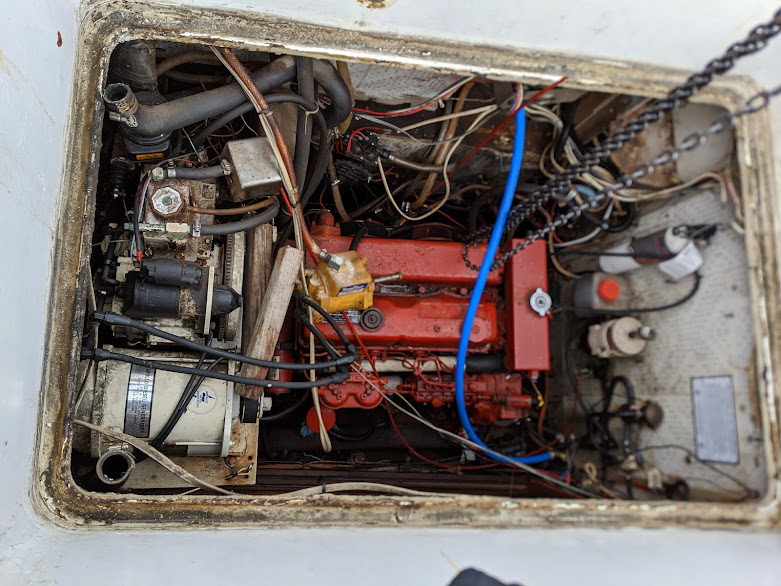Learning to Sew: Portholes and Zippers and Pleats, Oh My!
Last August we bought a sewing machine as a first step toward replacing all of our canvas and upholstery as well as making, repairing, and tailoring our own clothes.
Our levels of comfort and experience with sewing were similar. My mom had a home sewing business when I was little, and she taught me the basics. With her help, I made a couple of shirts from patterns in middle school, but I never progressed beyond that. Wayne hemmed his school uniforms and did basic clothing repairs. Neither of us had done any significant sewing in decades.
We registered for a "This Is a Sewing Machine" class at Drygoods Design, then showed up on the wrong day. Our second attempt found the class small and practical, the instructor patient, and the facility tidy and well-lit. This gave us a common foundation of skills and a refresher on best practices.
Wayne suggested that we start by making a new sail cover, but I was intimidated by the size and expense of that project. I insisted that small, cheap, and simple would be the best way to launch into this new venture. I learn by doing and making mistakes, and I was reluctant to start with an unwieldy, unfamiliar, and expensive task.
 |
| Black backing promotes naps. |
We bought some cheap fabric remnants, thread, and velcro, and I made covers for the portholes in our aft berth.
I chose a bright pattern for the inside to defeat the winter doldrums, then lined it with black to block more light. Dawn comes early in Seattle in summer.
I used stick-on velcro, so all I had to do was adhere one side to the frame, peel off the backing, stick the fabric to it, then peel the halves apart and sew the fabric side in place.
 |
| Orange: the color of success! |
It was gratifying to use new skills to complete a visible project that improved our lives in a small way. They may not look fancy, but trust me, they look way better than a black t-shirt and won't fall on your face at 3am.
 |
| They also look really cool under an RGB lamp! |
After the success of my Window Coverings that Worked, I felt more confident about sewing.
For my next project, I chose a skirt pattern with pleats, pockets (all skirts should have pockets!), and an invisible zipper. It came out about 4 sizes too big, but there was minimal swearing, the seams were straight, the zipper worked, and I felt satisfied with my growing skill set.
I made another skirt from the same pattern, and this time I decided to make it shorter. It came out a bit too short, and it didn't drape correctly. Super puffy! But it took a lot less time, and I started to find a rhythm for sewing on the boat. I also became very well acquainted with my seam ripper. Since this was my second effort with the same pattern, I got a bit cocky and was less than scrupulous about referring to the instructions.
My third project was my first attempt at creating my own pattern, inspired by a skirt I owned and liked. When I described my idea to a coworker, she told me it was a gored skirt. Yay learning! This one involved a lot of cutting and sewing, but I had a vision. I also have a strange love of the tedious. I was pleased with the results and even wear it in public!
 |
| It worked! |
The hardest thing about learning to sew from books is my lack of a fabric vocabulary. I recognize a lot of the terms, but I don't recognize the different types of cloth when I encounter them in the wild. Even after 18 years of retail work, I am reluctant to ask questions in stores and display my vast ignorance to strangers. Kudos to the friendly folks at Pacific Fabrics, who provided unsolicited advice at the register.




LOVE following your new paths with you. (And, also, I love gore skirts and am close to your size, if you need more practice.) Many congratulations on your persistence and successes!
ReplyDelete